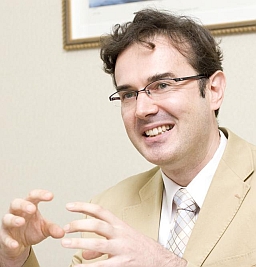講義の概要 / Outline of Lectures
日本語の講義と,英語の講義があります. このページには,主に数学演習の小テストの課題,解答例,レポート情報を掲載しています. 山田 一郎 教授と共同で実施している講義は,システムプランニングと情報と計測です.Instrumentation and Measurement in Engineeringは英語の講義です.他には,機械系少人数ゼミがあります.日本語でも,英語でも,仏語でも,あなたの質問に応えますので,遠慮をしないでドンドン質問してください.
機械数学演習1(常微分方程式)小テストの課題,解答例,レポート情報
本講義の目的は,常微分方程式の解法を学ぶことです.各講義では、前半に小テストを実施し,後半にその解説をしま す.出題順は,数学1Bの講義および右記の教科書での内容順とします.(「工学基礎微分方程式」及 川正行,永井敦,矢 嶋徹:サイエンス社)
本ホームページでは,例題と解答例を掲載していますので,予・復習用に各自活用して下さい. 評価基準 は,小テストと最終試験とします.
教科書と参考書
演習の内容,例題の解答,解法,pdf形式,順次アップロードします.
- 第1回:1階常微分方程式(第2章,3.1節)
変数分離形(2.1節)
1階線形常微分方程式(2.2節)
同次形(3.1節)
» 第1回例題解答 - 第2回:1階常微分方程式,定数係数線形常微分方程式(3.2~4.1節)
完全微分形(3.2節)
定数係数2階線形常微分方程式(同次方程式,4.1節)
» 第2回例題解答 - 第3回:定数係数線形常微分方程式(4.2, 4.3節)
定数係数2階線形常微分方程式(非同次方程式, 4.2節)
高階定数係数線形常微分方程式(4.3節)
» 第3回例題解答 - 第4回:連立常微分方程式(5.1節)
連立線形常微分方程式の解法(5.1節)
» 第4回例題解答 - 第5回:連立常微分方程式(5.2節),変数係数常微分方程式(7.1節)
定性的理論(5.2節)
オイラー型微分方程式(7.1節)
» 第5回例題解答 - 第6回:級数解(7.2, 7.3節)
正則点と整級数解(7.2節)
確定特異点(7.3節)
» 第6回例題解答
機械系少人数ゼミ
講義内容
ナノ・マイクロの領域や,光,におい情報,センサ等に興味のある学生の参加を期待しています.画像をクリックすると研究紹介のページが掲示されます.
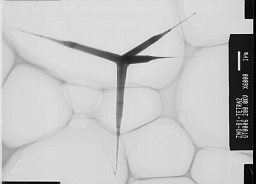
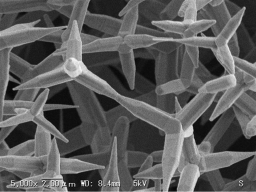
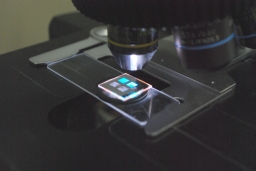
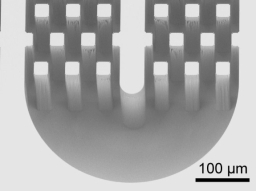
システムプランニング
講義内容
特許制度や高度情報化社会の進展などの「技術をとりまく社会の動き」,技術トレンドの予測手法やライフサイクルアセスメントなどの「システムプランニングの汎用手法」を学ぶとともに,情報記憶システム・生活環境情報システム・エネルギーシステム・ITS(高度交通システム)・静脈物流システムなど「システムプランニングの事例」を学ぶことによって,システムプランニングの手法を修得する.
情報と計測
講義内容
この講義のねらいは,システムに関する情報を収集する際に,どのように数学や物理の基本概念が応用されるのかを総合的な視野で学ぶことである.この講義により,情報基礎理論,最新センサーの物理原理,データ分析とシステム・モデリングに関する知識を習得する.また,具体的なケーススタディとして,環境センシングや生活環境ITに関する話題を取り上げる.
応用物理と統計学の一般知識があることが望ましい。2年冬学期の「計測の原理と応用」を履修していることが望ましい。(必須ではない。)
計測の原理と応用
講義ノート
Instrumentation and Measurement in Engineering
The course covers the basic principles of the theory of measurement and its applications to measurement systems. In the first part of the course, a background in the theory of measurement is provided with an emphasis on the statistics of measurement. The second part of the course deals with practical instrumentation techniques used to measure important physical quantities such as, temperature, strain, flow, position and displacement.
Introduction to Course
Course goal, overview and outline, class schedule, assignments and exams. (Includes a discussion about how the grades will be assigned.)
Introduction to the statistics of measurement
Introduction to information theory: information, binary choices, probability, entropy [bit], information transmission rate, sensor, calibration, signal vs. message, code, sampling, noise sources, effect of noise
Measurement errors and uncertainties: measurement, true value, random and systematic errors, uncertainty due to random errors, uncertainty due to systematic errors, total uncertainty, propagation of uncertainties, combination of separate measurements, covariance and correlation
Examples and case studies: sensor fusion, rejection of data, error analysis in flow measurement using pitot tube (ASME standard on measurement uncertainty)
Instrumentation and measurement
Temperature measurements: temperature scales and standards, electrical resistance thermometry (resistance temperature detectors and thermistors), thermoelectric temperature measurement (Seebeck’s effect, Peltier’s effect, thermocouples)
Flow measurements: flow rate concepts, volume flow rate through velocity determination, differential pressure flowmeters, mass flow meters, flow meter calibration and standards
Strain measurements: stress and strain, resistance strain gauges (metallic gauges, semiconductor gauges), holographic interferometry (in-line hologram, off-axis hologram, wave front comparison
Position, displacement, and level measurements: potentiometric sensors, gravitational sensors, capacitive sensors, optical sensors, ultrasonic sensors
Image formation in optical microscopy: Kohler illumination, bright and dark fields, phase-shift microscopy (Zernike), differential interference contrast, fluorescence microscopy, confocal microscopy
